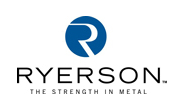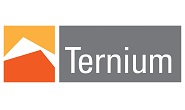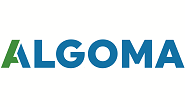Market Segment

Ryerson CEO: Uneven and Unusual Recovery Ahead
Written by Sandy Williams
November 1, 2020
Ryerson Holding Corp. reported incremental improvement in third-quarter 2020. Ryerson’s Q3 revenue increased 7.7 percent to $832 million, but the service center company posted a net loss of $39.9 million, which included a $52 million charge related to pension liabilities and 17.1 million in expenses related to the refinance of 2022 notes. Adjusted net income was $11.9 million.
Ryerson’s shipments rose by 5.8 percent and the average selling price by 1.7 percent. Carbon steel shipments jumped 4.4. percent to 377,000 tons.
The company saw gradual improvement across bookings, shipments and revenues during the quarter. In September, shipments were at 85 percent of pre-Covid levels and bookings at 90 percent, primarily due to momentum in end market restocking. Prices also improved during the quarter beginning with stainless and followed by aluminum and carbon steel. Carbon prices continued to improve in September and October.
Central Steel & Wire completed the conversion of an ERP system in the third quarter, which impacted earnings but will provide improved efficiency and customer service. CS&W incurred $3.2 million in reorganization costs during the quarter and a revenue loss of $30 million during the conversion period Aug. 10 through Sept. 30.
“Macroeconomic indicators reflected what we believe is the beginning of an uneven and unusual recovery with a multitude of unknowns,” said President and CEO Eddie Lehner. The Purchasing Managers Index expanded for a fourth month, but U.S. industrial production, while improved from earlier in the year, recorded an average 7 percent year-over-year contraction over the past three months. The latest MSCI shipment data was 10.9 percent below a year ago, but improved from Q2 2020.
Customer activity continued to improve, albeit unevenly during the third quarter., the company said. Compared to the second quarter, volumes in commercial ground transportation, consumer durables, food processing and agricultural equipment and the HAVC sector all improved, while metal fabrication, machine shop industrial equipment and construction equipment declined.
Pointing to surprising trends in recent months, Lehner noted that there is still a lot of dislocation in the supply chain, particularly for overseas goods. Activity has been high in home furnishings and appliances. The automotive recovery is trending at rates not thought possible back in April and May.
Ryerson did not offer fourth-quarter guidance due to uncertainties resulting from the continuing pandemic. ”We do note, however, that through the first several weeks of the fourth quarter, per day trends in revenue, gross margin, average selling prices, and volumes are moving higher relative to the third quarter as industrial metal commodity price drivers have improved along with restocking-driven demand across a greater number of end markets.”

Sandy Williams
Read more from Sandy WilliamsLatest in Market Segment

Nucor targets ‘white hot’ data center boom
With infrastructure demand shifting toward digital capacity, Nucor Corp. is positioning itself as the go-to steel supplier for the data center boom.

Gerdau’s N. American earnings rise in Q3 due to fall in imports
Gerdau’s North American profits rose in the third quarter, boosted by a decline in imports due to Section 232 steel tariffs.

Ternium swings to Q3 loss, eyes 2026 recovery
Ternium closed the third quarter with steady shipments and improving margins. But trade policy uncertainty and subdued demand in Mexico weighed on the Latin American steelmaker’s results.

SMU Mill Order Index fell in September
SMU’s Mill Order Index declined in September after repeated gains from June through August. The shift came as service center shipping rates and inventories fell.

Algoma’s losses widen in Q3 as tariff troubles continue
Algoma Steel’s net loss more than quadrupled in the third quarter on trade woes and its EAF transition. Separately, the company announced a change in leadership, as CEO Michael Garcia will retire at the end of the year.

